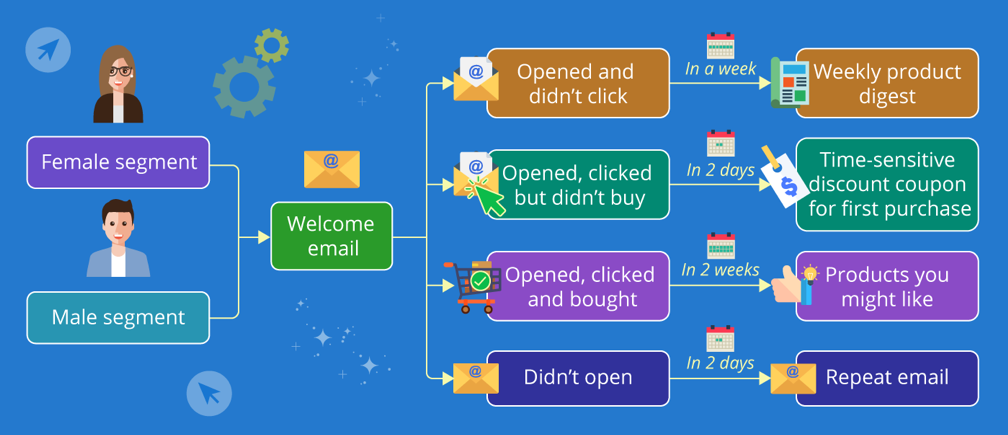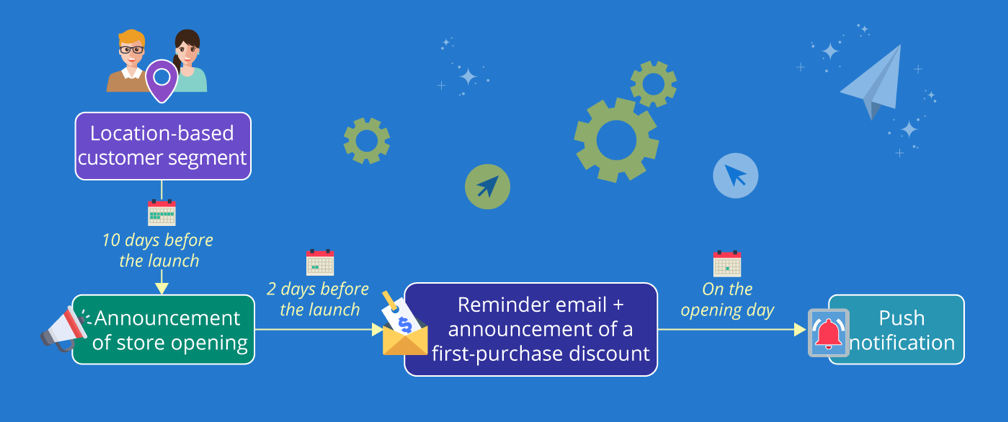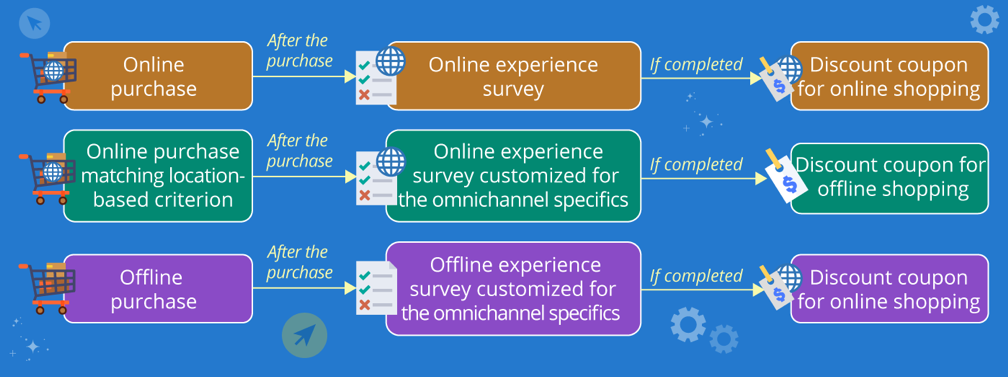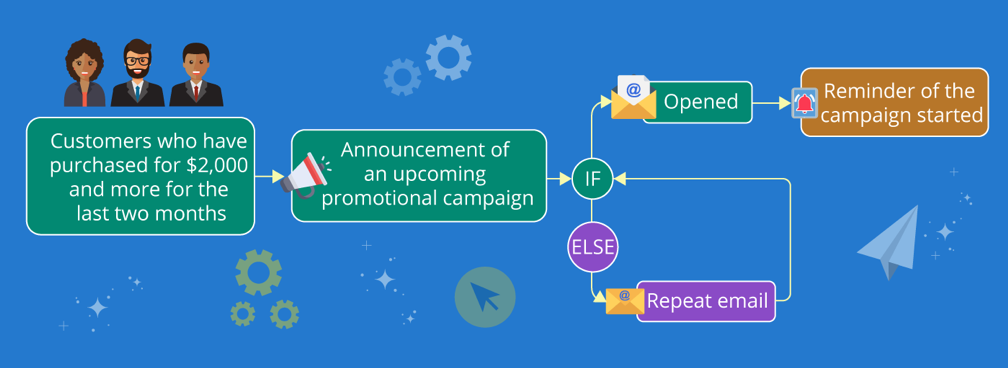How omnichannel retailers can use emails for diverse customer journeys
If only omnichannel retailers could unify all the customer information they have and deliver a unique personalized experience to clients across the whole ecosystem. Wait, they already can! We will need one marketing technique (email marketing) and our imagination to prove that. We are going to show how retail companies can engage both web and brick-and-mortar customers in diverse email campaigns. We will turn to robust marketing platforms (like Salesforce Marketing Cloud or Microsoft Dynamics for Marketing) to explain what functionality is required for the implementation of our ideas.
Why a marketing tool is a must
In omnichannel retail, core customer information arrives from a Point of Sale system for brick-and-mortar stores and an ecommerce platform for web stores. Striving to personalize their customer communication, retailers should start with creating a hub for this wealth of data. Unless the process is automated, teams from web and brick-and-mortar stores need to manually draw their data together, eliminate inconsistencies and, as a result, spend the lion’s share of their working time on this task.
In this regard, integrating marketing software with all the informational sources simplifies the task – customer profiles with personal details, purchasing history, wish lists and more data (depending on what systems are integrated) are automatically created and updated in real time. Sales teams can then manually enrich the profiles with personal characteristics, preferences and behavioral patterns of customers (this works particularly effectively for luxury retail where a one-to-one approach is needed). This vast data will provide the basis for advanced customer segmentation for email marketing campaigns. Taking our example of Salesforce Marketing Cloud, the task of centralizing customer data is carried out by Data Extensions in its Email Studio. If you want to learn more, you can read about the strategy from ecommerce builders expert.
Marketers win when they can effectively organize their email marketing activities. A customer journey builder in marketing software allows them to build complex customer journeys that will be further triggered as scheduled and implemented automatically. We specifically referred to customer journeys as complex because they can unfold in different ways depending on customers’ reaction. While conducting email marketing in Salesforce or Microsoft Dynamics for Marketing, companies map visualized journeys with a drag-and-drop builder.
Now that we have a possibility to consolidate customer information and automate email communication let’s see how it helps with email campaigns for omnichannel retailers.
Mapping customer journeys for omnichannel retail
We have come up with several marketing activities that involve both online and brick-and-mortar audience.
Cross-sharing of online and offline audiences
Retailers focus much of their effort on reaching new audiences. But email marketing is almost out of the game here as marketers need contact details to engage this technique – the practice of buying email lists can be an option for them, though its efficiency is questionable. In this regard, omnichannel retailers have a unique opportunity to cross-share online and offline audiences. In the example below, we will promote a web store to pure brick-and-mortar clients. But the same logic works the other way round as well, if retailers need to raise awareness of their brick-and-mortar presence.
Marketers need to get contact information of brick-and-mortar customers to engage them in email marketing campaigns. Launching loyalty programs is an optimal way to do that.
For journey mapping, online retailers start with creating several segments of brick-and-mortar customers. These can be segments based on demographic (age, gender, family status, etc.), psychographic (interests) and behavioral (purchasing patterns) factors. The first step of the journey is a personalized welcome email. At once, we see how marketers take advantage of a centralized customer base. They can not only address recipients by names, but also add individualized content that will be rendered specifically for each one. For example, they can show bestsellers or a selection of products matched in line with a customer segment. The second step depends entirely on customer behavior. Below, we suggest one of the possible journeys – you can use it as an outline for your future campaign.

Promoting in-store events
Omnichannel retailers can also consider web clients when launching in-store events, for example when opening up a new brick-and-mortar store. The geographical diversity of an online audience calls for location-based segmentation. Marketers filter out web clients by the city where the store is launched, thus ensuring that they don’t disturb the others with an irrelevant announcement.
The flow of the customer journey can include:
- Pre-announcement of the launch.
- A reminder shortly before the launch.
- A bonus for web clients.
There is a push notification in the customer journey visualized below, but the basis of the customer journey remains the same – email marketing.

Surveying customer experience
Omnichannel retailers focus on deeply integrated customer journeys when shoppers move between the touchpoints – web and brick-and-mortar stores – smoothly. With this aim in mind, marketers can launch an email campaign with post-purchase surveys customized to the omnichannel specifics.
Here are some of the questions that can be sent after an online purchase:
You find your shopping experience:
- Excellent
- Good
- Average
- Unsatisfactory
How easy is it to navigate our website?
- Very easy
- Easy
- Normal
- Difficult
Have you ever shopped in one of our physical stores?
- Yes
- No
If no, what is the reason?
- I didn’t know about the physical stores.
- The location is inconvenient for me.
- I prefer online shopping.
Other
- Text box

Surveys allow retailers to listen to their customers and continuously improve their experience. In our case of omnichannel retail, they offer an extra benefit of encouraging clients to choose how to shop with the company.
According to our idea, marketers design three experience surveys – two for web and one for brick-and-mortar shoppers. There are two different surveys for web clients for a good reason. As far as surveys include questions related to customers’ omnichannel experience, they are irrelevant for those who don’t have brick-and-mortar stores of this brand in the city. The two-level segmentation (location-related and behavioral) helps to handle the task.
Announcing simultaneous online and offline promotional campaigns
Rather than making promotional campaigns exclusive for web and brick-and-mortar stores, omnichannel retailers can run them online and offline simultaneously and encourage customers to shop in the way they like. Let’s say a luxury retailer is planning to give a 15% discount to clients with purchases totaling $2,000 and more for the last two months. Having created a customer segment in line with the required criteria, they design one email where they announce the campaign and offer clients to shop either online or in a local store – the discount will be valid any way. In an email, they should explain how customers will activate the discount. For example, this can be a unique promo code for an online store and a barcode that can be scanned from a smartphone screen for a physical store.

Final thoughts
Marketers need to think through how they can engage the whole – online and offline – audience while staying relevant and timely for them. With marketing software, they get a great helper in implementing omnichannel email campaigns with its power of marketing automation, customer segmentation, and communication personalization.
